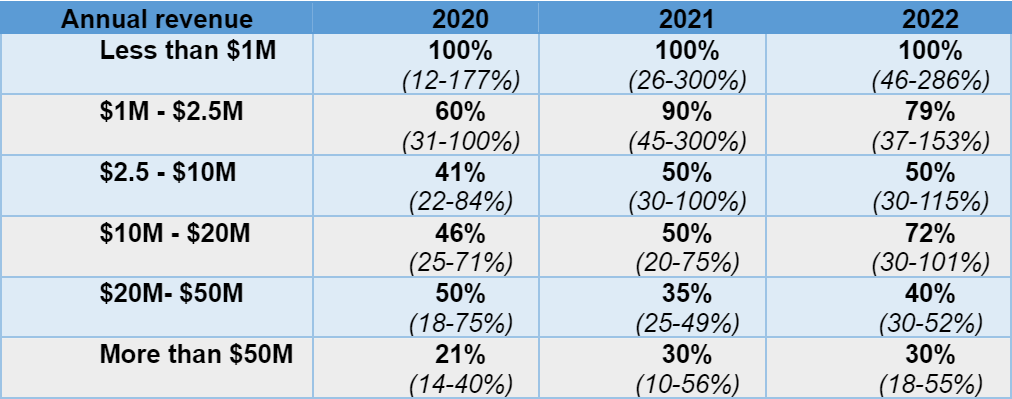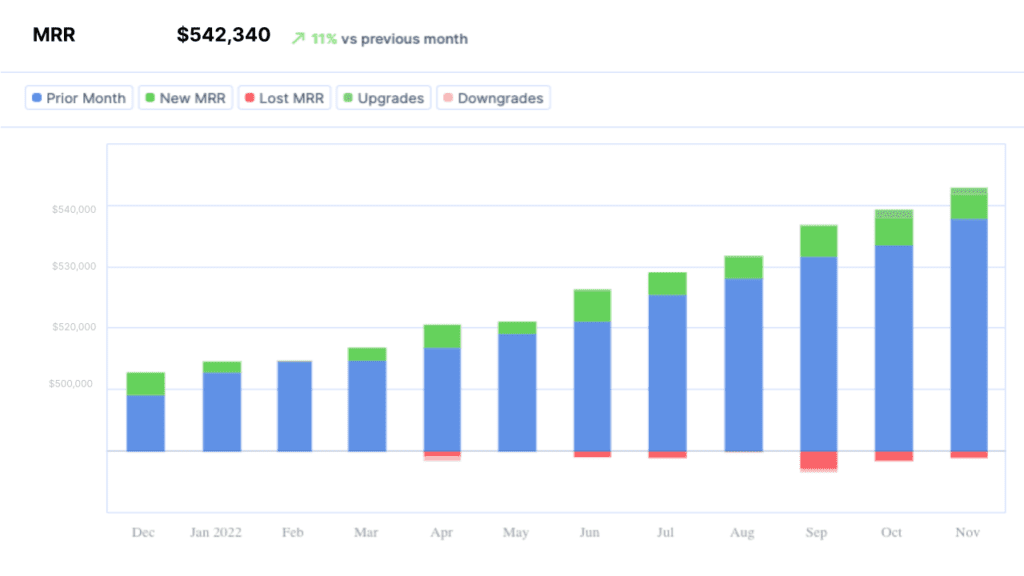Ready to transform data to insight?
Getting started with ScaleXP is easy! Try it for yourself with a 7 day free trial and get set up in minutes. Or, if you’d like to take a deeper dive, book a demo at a time that suits you.
MRR stands for Monthly Recurring Revenue. It is a measure of the predictable revenue that a company can expect to receive on a monthly basis from its subscription-based products or services.
MRR is calculated by adding all recurring revenue for a single month. The calculation simply requires classifying each revenue stream as recurring and non-recurring.
Recurring revenue refers to the predictable, ongoing income that a company receives regularly. It is most typically a monthly, quarterly or yearly subscription. Non-recurring revenue, on the other hand, is revenue that is not expected to continue regularly such as one-time product or service.
MRR is a critical metric to track the performance of SaaS companies. It is used to assess the quantity and percentage of predictable revenue and a critical indicator of growth. Understanding recurring revenue is also critical to budgeting and forecasting.
A high MRR and a steadily increasing MRR are positive indicators of business performance.
The most common MRR benchmark is MRR Growth Rate, or the annual increase in MRR. MRR Growth Rate is one of the most important SaaS growth metrics.
A good result is driven by two factors: your target customer market and the size of your own company. To fully understand the benchmarks for your company, it is worth having a look at our more detailed article on the 2022 benchmarks.
The table below shows MRR growth rate benchmarks over the last three years, from 2020 to 2022. To read the table, start by identifying annual revenue for your company in the left column.
The row of data that follows shows the average, lower quarter and top quartile results.
As an example, for companies with up to $10M of revenue, in 2022, the average MRR Growth Rate in 2022 was 50%. The lowest quartile of companies had a 30% growth rate, while the top quartile had 115%.

There are several interesting items to note:
There is a vast difference between top quartile and lower quartile performance in all years and for companies of all sizes. In 2023, we expect this gap to shrink. For details on why, have a look at our more detailed article on the 2022 benchmarks.
This data is compiled by Openview VC and includes 600 companies from pre-revenue to £100M ARR, globally. All companies in the survey have VC funding so may have higher growth rates than bootstrapped SaaS businesses.
ScaleXP is the leading SaaS finance tool, able to provide a full suite of SaaS metrics, automatically calculated each month. The system connects to and imports data from both your accounting (Xero or NetSuite) and CRM (HubSpot or Salesforce) systems. As data is imported, a series of smart algorithms prepare a revenue recognition schedule and from this, graphs such as these which show both MRR and MRR Growth rate, split into New MRR, Lost, Upgrades and Downgrades.
To read more about how the system can automate your SaaS metrics, click here .

Predictable revenue that a company can expect to receive on an annual basis from its subscription-based products or services.
Percentage increase in revenue over a certain period of time, most typically a quarter or a year.
Getting started with ScaleXP is easy! Try it for yourself with a 7 day free trial and get set up in minutes. Or, if you’d like to take a deeper dive, book a demo at a time that suits you.
© 2024 ScaleXP | All Rights Reserved Company Number: 11447363
